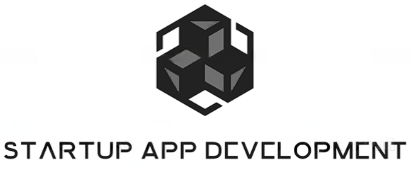Launching a startup is a thrilling adventure, but as excitement begins to meet reality, efficient process implementation becomes crucial. Whether you’re a budding entrepreneur or well on your way with your startup journey, mastering the art of implementing processes can unlock the door to success and growth. From avoiding common pitfalls to embracing smart innovations, the following tips will guide you smoothly through the complexities of executing new processes in your business.
1. Understanding Your Startup Needs
Before jumping into process implementation, it’s essential to comprehend the unique needs of your startup. A clear understanding of what drives your operations and your team’s workflow will help you tailor processes that truly benefit your venture.
Diving deeper, consider the goals you aim to achieve with the processes. Is it to optimize current workflows, reduce costs, or even amplify output? Pinpointing these objectives will aid in crafting a process structure that not only aligns with your startup’s vision but enhances it. Understanding your needs is crucial in laying down a solid foundation for your processes.
2. Identifying Core Processes
Pinpointing the most crucial processes that will have the greatest impact is the next step. By focusing on these core processes, you can ensure that your startup runs smoothly and efficiently from the ground up.
Drawing inspiration from successful startups, a focus on core functions can prevent the scatter effect of trying to do everything at once. Identifying which processes will drive growth, like product development or customer acquisition, becomes critical. For example, according to lean startup principles, a targeted approach allows startups to iteratively refine their offerings, mitigating risks early on.
3. Setting Clear Objectives
To ensure successful implementation, define clear, achievable goals for every process. These objectives will provide a roadmap and keep everyone aligned towards the same outcomes.
Incorporating milestones within the process objectives acts as motivators for your team and provides a clear path for measurement. Ensuring goals are SMART—Specific, Measurable, Achievable, Relevant, Time-bound—anchors your focus, enhancing motivation and clarity. This mirrors strategies used in the startup ecosystem, where clear, iterative targets propel progress.
4. Creating an Implementation Plan
Outline a detailed plan that maps out each step of the process. This plan will act as a guide, ensuring nothing falls through the cracks and that implementation progresses in an orderly fashion.
Consider involving all relevant stakeholders while formulating your plan. This not only boosts buy-in but also uncovers potential roadblocks early on. Getting everyone on the same page further enhances execution fidelity. Moreover, strategic planning accentuates transparency and accountability.
5. Involving Your Team
Engage your team in the process implementation phase. Their insights and feedback can be invaluable, fostering a sense of ownership and buy-in which are critical for smooth adaptation.
6. Assigning Clear Roles and Responsibilities
Assign roles and responsibilities clearly to avoid confusion and ensure accountability. When everyone knows their part, processes are more likely to flow smoothly and efficiently.
7. Leveraging Technology
In today’s digital age, the right technology can greatly enhance your process implementation. Consider tools and software that streamline tasks and boost productivity.
Exploring innovative solutions not only enhances efficiency but also future-proofs your operations. Leveraging advancements like AI can automate mundane tasks, while cloud solutions offer scalability. The integration of technology into workflows can be transformative, as evidenced by the rise of agile methodologies that prioritize adaptability and speed.
8. Training and Support
Offer ample training and support to your team members as they adjust to new processes. Providing resources ensures they feel supported and can handle the changes comfortably.
9. Monitoring Progress
Regularly check in to assess how the implementation is going. Monitoring progress allows you to identify any issues early and make necessary adjustments swiftly.
Utilizing key performance indicators (KPIs) ensures that the implementation doesn’t deviate from the set goals. Implementing regular check-ins or feedback sessions ensures that ongoing processes are transparent and that teams feel supported. At Startup App Development, for instance, continuous optimization based on feedback is pivotal.
10. Remaining Flexible
Keeping a flexible approach can empower your startup to adapt to unforeseen challenges. Being open to modifications ensures processes remain effective even as the startup evolves.
It’s crucial to remain adaptable as startups grow. Flexibility grants the latitude to pivot when necessary and capitalize on unexpected opportunities. This trait, emphasized in tech startup circles, allows for resilience against market or internal pressures.
11. Gathering Feedback
Collect feedback from your team to fine-tune your processes. Their firsthand experience is invaluable in recognizing what works and what might need tweaking.
Emphasizing a feedback loop encourages continuous improvement. Moments of reflection provide chances for iterative changes that uplift the entire process. Drawing insights from employee experiences makes systems robust and inclusive.
12. Celebrating Successes
Celebrate milestones and small victories along the way. Recognizing achievements keeps morale high and motivates your team to continue driving process implementation forward.
When accomplishments are acknowledged, it nurtures a positive team environment and fortifies relationships. Remember, cheering for victories, big or small, not only fosters team spirit but also cements commitment to the overarching vision of your startup’s development journey.


